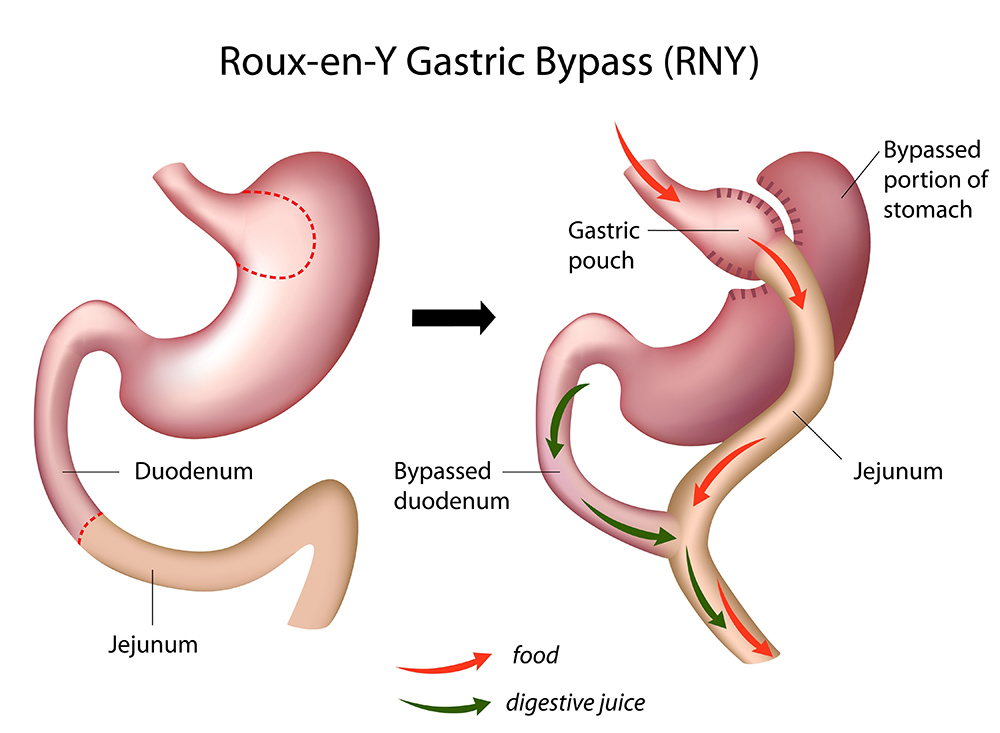Roux-en-Y Gastric Bypass
Also called Roux-en-Y Bypass, it is the oldest operation. It has been carried out since 1966 and has stood the test of time as it is the only operation that has been carried out for more than 40 years. It is considered the standard operation to which all others must be compared. In recent years, many details have been improved that make it safer and more effective.
In this operation, to the restriction of the amount of food that can be eaten, an important malabsorption component is added to achieve greater weight losses. It comprises ∼40% of metabolic operations currently being performed and is the most common procedure in Latin America, including South America. In this procedure, a ∼15 to 30 mL proximal gastric pouch is created, separate from the distal Stomach. These anatomical changes lead to alterations in the signaling between luminal factors and the intestinal mucosa, thus generating neurohumoral effects that further lead to alterations in hunger, satiety, energy balance, modest malabsorption and weight loss. (1).
Advantage
Produces significant long-term weight loss (60 to 80 percent excess weight loss).
Restrict the amount of food that can be consumed.
It can lead to conditions that increase energy expenditure.
It produces favorable changes in intestinal hormones that reduce appetite and increase satiety.
Typical maintenance of> 50% of excess weight loss
